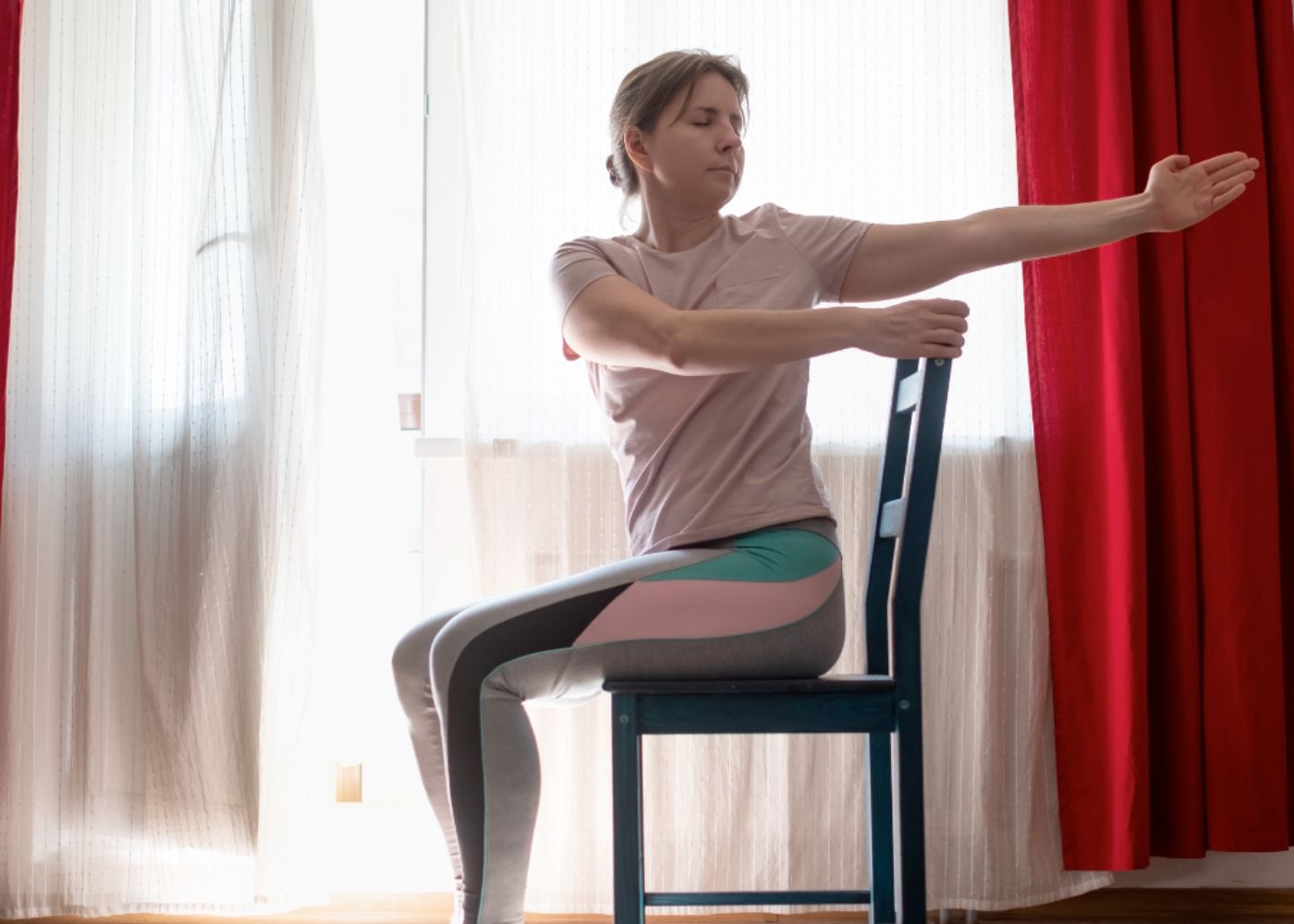Revitalize Your Work at Home Routine with These Physiotherapy Exercises
Now that technology have become a lot more accessible, working from home is becoming a popular option for many people. However, a Japanese study shows that those working from home are more likely to develop lower back pain.
This is due to poor work environment and ergonomics, leading to neck, shoulder, and back pain. Given this, it’s important for those working from home to stay on top of maintaining good health and posture to avoid further injuries.
In this article, we discuss the importance of physiotherapy exercises and how these exercises can help improve posture.
But First – What is Physiotherapy?
Physiotherapy focuses on assessment, diagnosis and treatment of injuries, pain and physical disabilities. Physiotherapists use techniques such as exercise and manual therapy to help people recover from injury, manage pain and regain movement.
Physiotherapists assist with a lot of common conditions, including , musculoskeletal injuries and sports injuries.
They work with patients to develop personalized treatment plans to help them to:
- Achieve their physical goals
- Reduce pain
- Improve mobility
- Restore function
- And improve quality of life.
If you are suffering from shoulder pain, click and read this article about physiotherapy and shoulder pain.

Benefits of Physiotherapy Exercises to Address Poor Posture
Benefit #1: Reduce Pain and Discomfort
Poor posture is a common issue that affects many people who work from home, especially those who spend long periods sitting in front of a computer. It can lead to pain and discomfort in various areas of the body, including the neck, shoulders, back, and hips. This pain and discomfort can be caused by muscle strain, tension, and compression of nerves or blood vessels.
Postural exercises can help to alleviate pain and discomfort by strengthening and stretching the muscles. The areas typically involve the neck, shoulders, back, and hips.
They can also help to improve flexibility and range of motion, which can further reduce pain and discomfort caused by poor posture. Improved flexibility can help to reduce tension and strain on the muscles, allowing them to move more freely and comfortably.
Benefit #2: Improve Breathing and Circulation
Poor posture can negatively impact breathing and circulation in several ways. When we hunch forward or slouch our spine, it can compress the chest cavity and restrict lung capacity. This can make it more difficult to take deep breaths and can also reduce oxygen intake.
Similarly, poor posture can also impede circulation, as it can put pressure on blood vessels and impede blood flow.
Postural exercises can help to improve breathing and circulation by correcting alignment and opening up the chest.
By strengthening the muscles in the upper back, shoulders, and chest, postural exercises can help to pull the shoulders back and encourage proper alignment of the spine. This can open up the chest cavity and allow for fuller, deeper breaths, which can improve oxygen intake and increase energy levels.
Benefit #3: Boost Energy and Productivity
Postural exercises can help to boost energy and productivity for people who work from home by reducing the fatigue and discomfort associated with poor posture.
When we position our spine in a poor position, we may be putting unnecessary strain on our muscles and joints, which can lead to feelings of fatigue and discomfort. This can make it more difficult to focus and concentrate on work tasks, leading to decreased productivity.
By improving posture through postural exercises, the body functions at a more optimal level. This can then help boost energy levels and make it easier to stay focused and productive throughout the workday.
Additionally, good posture can also help to reduce distractions by minimizing discomfort and pain associated with poor posture, allowing individuals to concentrate more fully on their work tasks.
Benefit #4: Prevent Injury
Poor posture can increase the risk of injury for individuals who work from home by placing unnecessary stress on muscles and joints.
When we sit or stand with poor posture, we may be putting undue strain on our muscles and joints, which can lead to strains, sprains, and other types of injuries. This is especially true for individuals who spend long hours sitting in front of a computer, as this can put additional strain on the neck, shoulders, back, and hips.
Postural exercises can help to prevent injury by improving alignment and strengthening muscles. By targeting the muscles that support good posture, such as the core muscles, upper back, and shoulders, postural exercises can help to reduce the risk of strain and injury to these areas.
Additionally, these exercises can help to increase flexibility and range of motion, which can further reduce the risk of injury by allowing muscles to move more freely and comfortably.
Benefit #5: Improve Overall Health and Well-being
Poor posture can lead to a host of issues, including pain and discomfort, reduced flexibility and range of motion, and an increased risk of injury. On the other hand, good posture can improve circulation, enhance breathing, and reduce muscle tension and fatigue.
Postural exercises can be an effective way to improve overall health and well-being for individuals who work from home. By improving posture, this can help to reduce pain and discomfort which in effect leads to increased comfort and flexibility.
Having good posture also makes us feel more confident and assertive, which can contribute to reducing anxiety and depression.

Common Pitfalls of Working from Home
While working from home gives mums a lot more flexibility around time and family, there are a few things we need to be aware of when it comes to our health and wellbeing.
Lack of structure and routine
Working from home can blur the line between work and personal life, making it challenging to establish a routine or stick to a schedule. This can lead to decreased productivity and difficulty in separating work from personal life.
Social isolation and loneliness
Working from home can be isolating, leading to feelings of loneliness and social disconnection, which can impact mental health and well-being.
Distractions and interruptions
Home environments can be full of distractions, such as family members, pets, household chores, and personal devices, which can make it difficult to focus and complete work tasks efficiently.
Poor ergonomics and posture
Home offices are often not designed for prolonged use, which can lead to poor ergonomics and posture. This can cause physical discomfort and pain, which can impact productivity and overall health.
It is important to be aware of these traps and take steps to address them, such as establishing a routine, creating a designated workspace, taking breaks, and seeking social interaction through virtual means or by scheduling regular in-person meetings.
5 Exercises You Can Do at Home to Keep a Healthy Body and Spine
Bridges
Bend your knees and lie on your back on the ground. Squeeze your bottom and lift your hips towards the ceiling, hold for 5 seconds and slowly lower down to the starting position. Repeat 10-15 times.
Wall Angels
Stand with your back against a wall, have your arms straight by your hips, with elbows and wrist against the wall. Squeeze your shoulder blades and slowly slide your arms up and down the wall. Repeat 10-15 times.
Thoracic Rotations
Sit with your bottom all the way back into the chair with your feet flat on the ground. Gently twist your trunk to one side and reach for the back of the chair, hold for 5 seconds then twist to the other side. Repat 10-15 times each side.
Seated Roll Down
Sit upright on a chair. Draw your chin to your chest and slowly roll your spine down to touch the floor. Slowly return to upright. Repeat 10-15 times.
Shoulder circles
Draw forward circles with your shoulders then continue with backward circles. Repeat 10-15 times each direction.
Do These Physiotherapy Exercises and Say Goodbye to Back Pain
As working from home gains popularity, it is important to have your home office set up efficiently. Read here to check out how to set up your home office with an electric desk.
While working from home has many benefits, it is important to stay on top of possible physical challenges that arise from working from home. This is where physiotherapy can play an important role in addressing these challenges like prolonged sitting, poor posture and back ache.
Start paying attention to your posture and do these simple exercises to prevent injury and combat bad posture.

My name is Fu Ping An and I am a dedicated writer for The Local Physio. I have a background in physiotherapy and love helping other women maintain their health and lifestyle through teaching them good daily practices for their posture and alignment. I strongly believe that all mums are able to improve their flexibility and strength when looking after their kids, by adopting simple physiotherapy exercises.




